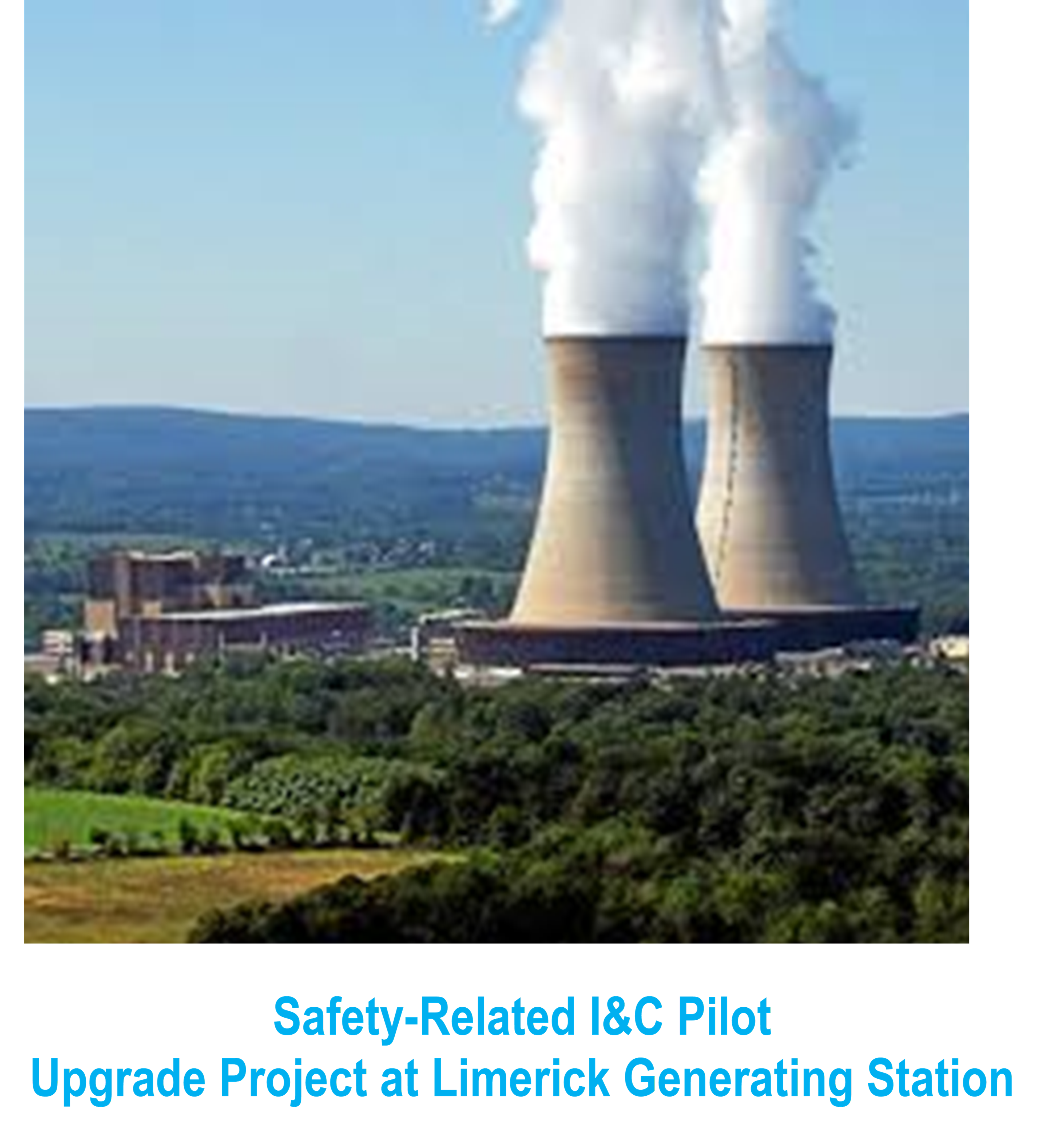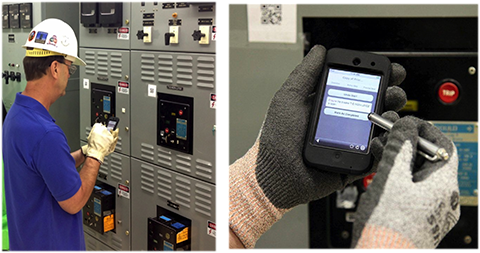Reliable instrumentation, information, and control (II&C) systems technologies are essential to ensuring safe and efficient operation of the U.S. LWR fleet. These technologies affect every aspect of nuclear power plant and balance-of-plant operations. They are varied and dispersed, encompassing systems from the main control room to primary systems and throughout the balance of the plant. They interact with every active component in the plant and serve as a kind of central nervous system.
Current instrumentation and human-machine interfaces in the nuclear power sector employ analog technologies. In other power generation sectors, analog technologies have largely been replaced with digital technologies. Although considered obsolete by other industries, analog instrumentation and control continues to function reliably, though spare and replacement parts are becoming increasingly scarce as is the workforce that is familiar with and able to maintain it. In 1997, the National Research Council conducted a study concerning the challenges involved in modernizing existing analog-based instrumentation and controls with digital instrumentation and control systems in nuclear power plants. Their findings identified the need for new II&C technology integration.
Research and Development Purpose and Goals
 The Plant Modernization Pathway conducts targeted research and development to address aging and reliability concerns with the legacy instrumentation and control and related information systems of the U.S. operating LWR fleet. This work involves two major goals: (1) to ensure that legacy analog II&C systems are not life-limiting issues for the LWR fleet, and (2) to implement digital I&C technology in a manner that enables broad innovation and business improvement in the nuclear power plant operating model. Resolving long-term operational concerns with the II&C systems contributes to the long-term sustainability of the LWR fleet, which is vital to the nation’s energy and environmental security. The Plant Modernization Pathway research and development efforts address critical gaps in technology development and deployment to reduce risk and cost. The objective of these efforts is to develop, demonstrate, and support deployment of new digital II&C technologies for nuclear process control, enhance worker performance, and provide enhanced monitoring capabilities to ensure the continued safe, reliable, and economic operation of the nation’s nuclear power plants.
The Plant Modernization Pathway conducts targeted research and development to address aging and reliability concerns with the legacy instrumentation and control and related information systems of the U.S. operating LWR fleet. This work involves two major goals: (1) to ensure that legacy analog II&C systems are not life-limiting issues for the LWR fleet, and (2) to implement digital I&C technology in a manner that enables broad innovation and business improvement in the nuclear power plant operating model. Resolving long-term operational concerns with the II&C systems contributes to the long-term sustainability of the LWR fleet, which is vital to the nation’s energy and environmental security. The Plant Modernization Pathway research and development efforts address critical gaps in technology development and deployment to reduce risk and cost. The objective of these efforts is to develop, demonstrate, and support deployment of new digital II&C technologies for nuclear process control, enhance worker performance, and provide enhanced monitoring capabilities to ensure the continued safe, reliable, and economic operation of the nation’s nuclear power plants.
New value from II&C technologies is possible if they are integrated with work processes, directly support plant staff, and are used to create new efficiencies and ways of achieving safety enhancements. A goal of these efforts is to motivate development of a seamless digital environment for plant operations and support by integrating information from plant systems with plant processes for plant workers through an array of interconnected technologies:
Plant systems – beyond centralized monitoring and awareness of plant conditions, deliver plant information to digitally based systems that support plant work and directly to workers performing these work activities.
Plant processes – integrate plant information into digital field-work devices, automate many manually performed surveillance tasks, and manage risk through real-time centralized oversight and awareness of field work.
Plant workers – provide plant workers with immediate, accurate plant information that allows them to conduct work at plant locations using assistive devices that minimize radiation exposure, enhance procedural compliance and accurate work execution, and enable collaborative oversight and support even in remote locations.
The development and collaborations through this pathway are intended to overcome the inertia that sustains the current status quo of today’s II&C systems technology and to motivate transformational change and a shift in strategy – informed by business objectives – to a long-term approach to II&C modernization that is more sustainable.
This research pathway will address aging and long-term reliability issues of the legacy II&C systems used in the current LWR fleet by demonstrating new technologies and operational concepts in actual nuclear power plant settings. This approach drives the following two important outcomes:
Reduces the technical, financial, and regulatory risk of upgrading the aging II&C systems to support extended plant life to and beyond 60 years.
Provides the technological foundation for a transformed nuclear power plant-operating model that improves plant performance and addresses the challenges of the future business environment.
The research program is being conducted in close cooperation with the nuclear utility industry to ensure that it is responsive to the challenges and opportunities in the present operating environment. The scope of the research program is to develop a seamless integrated digital environment as the basis of the new operating model.
A Utility Working Group composed of leading nuclear utilities across the industry (representing 70% of the existing LWR fleet) and Electric Power Research Institute advises the program. The Utility Working Group developed a consensus vision of how a more integrated approach to modernizing plant II&C systems could address a number of challenges to the long-term sustainability of the LWR fleet. A strategy was developed to transform the nuclear power plant operating model by first defining a future state of plant operations and support based on advanced technologies and then developing and demonstrating the needed technologies to individually transform the plant work activities. The collective work activities were grouped into the following major areas of enabling capabilities:
Human performance improvement for nuclear power plant field workers
Outage safety and efficiency
Online monitoring and information integration
Integrated operations
Automated plant
Hybrid control room.
In each of these areas, a series of pilot projects are planned that enable the development and deployment of new II&C technologies in existing nuclear power plants. A pilot project is an individual demonstration that is part of a larger strategy needed to achieve modernization according to a plan. Note that pilot projects have value on their own, as well as collectively. A pilot project is small enough to be undertaken by a single utility, it demonstrates a key technology or outcome required to achieve success in the higher strategy, and it supports scaling that can be replicated and used by other plants. Through the LWRS Program, individual utilities and plants are able to participate in these projects or otherwise leverage the results of projects conducted at demonstration plants.
The pilot projects conducted through this pathway serve as stepping-stones to achieve longer-term outcomes of sustainable II&C technologies. They are designed to emphasize success in some crucial aspect of plant technology refurbishment and sustainable modernization. They provide the opportunity to develop and demonstrate methods to technology development and deployment that can be broadly standardized and leveraged by the commercial nuclear power fleet. Each of the research and development activities in this pathway achieves a part of the longer-term goals of safe and cost-effective sustainability. They are limited in scope so they can be undertaken and implemented in a manner that minimizes technical and regulatory risk. In keeping with best industry practices, prudent change management dictates that new technologies are introduced slowly so that they can be validated within the nuclear safety culture model.
Prior to the time the individual pilot projects are scheduled to begin, members of the Utility Working Group are solicited to serve as host utilities for the research and development activities in which the new technologies are demonstrated and validated for production usage.
Human Systems Simulation Laboratory
 The Human Systems Simulation Laboratory at Idaho National Laboratory is used to conduct research in the design and evaluation of hybrid control rooms, integration of control room, development and piloting of human-centered design activities with operating crews, and visualizations of different end state operational concepts. This facility consists of a reconfigurable simulator that supports human factors research, including human-in-the-loop performance, human-system interfaces, and can incorporate mixtures of analog and digital hybrid displays and controls. It is applicable to the development and evaluation of control systems and displays of nuclear power plant control rooms, and other command and control systems. The Human Systems Simulation Laboratory will be used to study human performance in a near-realistic operational context for advanced nuclear power plant control room design.
The Human Systems Simulation Laboratory at Idaho National Laboratory is used to conduct research in the design and evaluation of hybrid control rooms, integration of control room, development and piloting of human-centered design activities with operating crews, and visualizations of different end state operational concepts. This facility consists of a reconfigurable simulator that supports human factors research, including human-in-the-loop performance, human-system interfaces, and can incorporate mixtures of analog and digital hybrid displays and controls. It is applicable to the development and evaluation of control systems and displays of nuclear power plant control rooms, and other command and control systems. The Human Systems Simulation Laboratory will be used to study human performance in a near-realistic operational context for advanced nuclear power plant control room design.
Cyber Security
Cyber security is recognized as a major concern in implementing advanced digital II&C technologies in nuclear power plants in view of the considerable security requirements necessary to protect these facilities from potential adversaries, as well as protect company-proprietary information. The members of the Utility Working Group have expressed the need to ensure that cyber security vulnerabilities are not introduced through adoption of these advanced digital technologies. Furthermore, these utilities have internal cyber security policies and regulatory obligations that must be upheld during implementation of the project technologies.
 Contribution to Industry Consensus Guidelines
Contribution to Industry Consensus Guidelines
To ensure appropriate transfer of technology to the nuclear power industry, guidelines documents will be published for each of the areas of enabling capabilities, incorporating the specific technologies and technical reports produced under each of the pilot projects for the respective areas. Electric Power Research Institute has agreed to assume responsibility for development and publication of these guidelines, using their standard methods and utility interfaces to develop the documents and validate them with industry. The Advanced II&C Systems Technologies Pathway will support this effort by providing the relevant information and participating in the development activities.